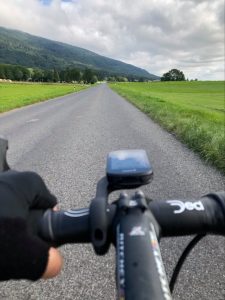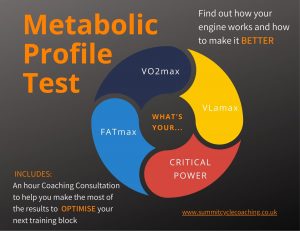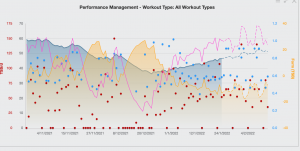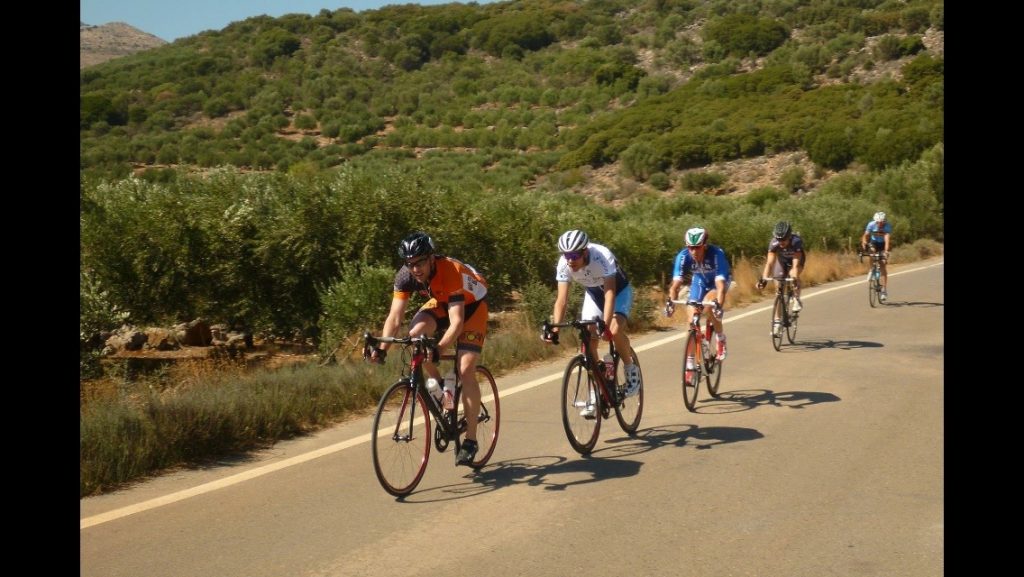Planning – From Season to Session…How do you do it?
Why Plan
Planning your training can be tricky, especially with all the other elements of your life to balance! Whether it’s a partner, kids, busy job, social commitments, or anything else…not many people have the time to train like a pro athlete. Perhaps more importantly, most people don’t have the time to recover as well as a pro athlete.
This last point is surprising to some. You can overtrain/under-recovery on 5-6 hours a week, which again people don’t realise.
The good news is that with a bit of planning you can create an effective plan and perhaps, more importantly, avoid the mistakes that really hold you back from your best performances.
The Plan start with:
Year -> Month -> Week -> Day
Where to Start?
It starts with a goal!
If you have a goal in mind, whether it’s a training goal, riding goal or performance goal your planning should start with this.
What you need to know:
- What are the demands of the event?
- How do your current abilities match up to this?
- What do you need to do to bridge the gap between where you are and where you need to be?
Don’t get sucked into miracle intervals and fads. Have a good plan and be flexible when life gets too busy.
Start with the Big Picture
- Once you have your goal and your training focus, start planning in broad brush strokes
There’s no point in planning every session for the 3, 4 or 5 months your goal. Life will without doubt throw a few spanners in the works. As a coach, that is now even more common with Covid interupting many of my athletes plans.
So plan in blocks, with a simple ‘focus of the week’ allowing you to pencil in the type of training you wnat to do to make sure you are preparing for the demands of your event in plenty of time for the event.
On the right you can see an example of a planner I use. Simple Excel spreadsheet. Once I’ve written it, I duplicate it and then keep one ‘original’ and one that I change as I go…common things that force change are:
- Illness
- Injury
- Travel with Work/family
- Family commitments
- And many other things
By the time the goal comes around the two are often very different, however, the essence of the plan is still there as a guiding hand. Easy to get lost if you don’t have this
I usually start by putting the goals in the planner and working my way between where we are to where we need to be. The specifics of each week’s focus really depend on the athletes’ strengths/weaknesses and the demands of the event.
Season Planning
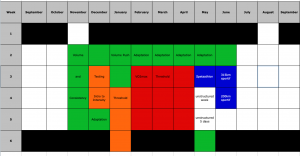
In the above planner, you can see It starts with some very general preparation. Lots of green weeks, just getting on the bike regularly, no specific efforts.
Then a few blocks with more structured weeks (in orange), with some moderate efforts, for me they were sweet spot efforts, gradually building my time in zone and doing some over-geared work.
Every few weeks there’s an adaptation week, with lower volume and either one or no high-intensity sessions. This just allows a mental and physical break from the same training.
Finally, there are the red blocks, where I’m really trying to build the key elements of fitness for the event. You can see they are fairly classic 3 week builds and then a week off, but if something gets in the way (travel, fatigue) they can be shifted…or if someone doesn’t need the rest yet, we may push on an extra week…remember, this is the guiding hand, it’s not set in stone!
Month Planning
To keep it simple, we’ll say it’s planning for the Month. It’s not the only way, some coaches like a few weeks’ build and then a down week. Some like a consistent week on week very gradual progression keeping it manageable so not needing the down weeks. I’ve tried both and find people need both the mental and physical break…if you are clever you can plan family time, work time, travel (or whatever life pressure you have) in the down weeks when you don’t have as much training stress.
I try to gradually increase stress through the 3 week build (for example), whether that is volume or time in zone. I monitor various variables to see how fatigued the riders are and the feedback from the sessions, which helps me adjust sessions, days-off if needed.
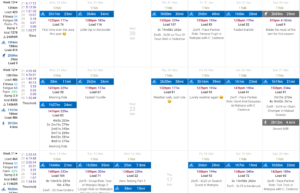
Once you finish a build period, it’s time to absorb the training with a week of less volume and/or less intensity. This is a more dangerous time than most…over-do it on these weeks and you can really un-do your good work. It’s tempting to keep pushing on, but if you do you will likely break down in the middle of the next block. THi is far more damaging to your overall progression than your planned adaptation week. So be disciplined and rest/recover when you planned so you are fresh to hit the next block hard and really make it developmental.
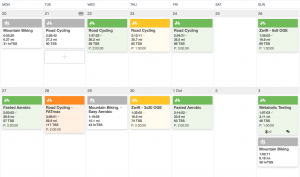
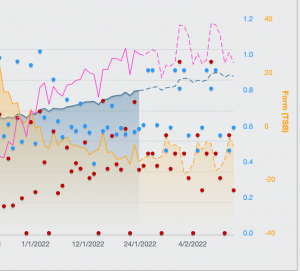
Training Weeks
- This is about as far as I plan in detail
There’s very little benefit in planning in detail much beyond a week. You will almost certainly be re-writing sessions and re-arranging things if you do.
Start with assessing the last week’s training, looking at the focus and the coming week and writing sessions that push the desired progression buttons 🙂
Weekly training often has a rhythm to it. Most people will do their long ride on a certain day, be on the turbo on certain days, certain days off, etc. So I write the week with that individual’s needs in mind. Then factor in any variables affecting the week (family, work, B-races, etc).
It’s easy with this process to make the progression of sessions and weeks.


THE BIG MISTAKES TO AVOID!!!
- Don’t think because you only have a few hours, ‘every training session has to be really hard!’
This is the biggest mistake people with limited time make. The simple truth is no one can train like this sustainably. You simply cannot recover fast enough with this approach so you end up digging a big hole for yourself. You either end up overtraining and burning out, plateauing and not reaching your potential or getting illnesses all the time.
You need a mix of different intensities and a training plan that is balanced enough to allow you to sustain it for a long period of time. This is where the big gains are.
- Don’t think just because you only have 30-60 minutes it won’t do anything!
This overlaps with my previous point. Just because you only have 40 minutes to fit in a ride on the turbo it’s not pointless and you don’t have to go flat out to achieve something!!
There’s great benefit in just getting on and riding, if it’s supposed to be an easy day, keep it easy. Save your hard efforts for the hard days.
Even short, easy rides have a good impact on your fitness…DO NOT underestimate them!! It’s a nice stimulus that will create adaptation and as part of a balanced programme have a massive benefit.
Missing these rides because you think they won’t do anything is a huge mistake, as is making them too hard.
- Don’t Believe in the ‘Magic Intervals’
Magazine and internet articles will tell you their intervals will ‘Boost your fitness instantly’ or be a ‘shortcut to massive fitness gains’!! Never believe them!! They may quote scientific articles, but in truth, they are commonly done on untrained students who will respond to just about any training.
Good, long term fitness gains come from a more patient, structured approach that doesn’t have to take all your free time.
…It can be done with limited time and a busy life…
See the Case Study of a Time Crunched Athlete for more on this…
1. Obsess too Much About minute Details
It’s good to set out a plan of where you can train in the week. Starting with the times when the training will have the least impact on anything or anyone else.
For example, my wife takes the kids to Greek School on a Saturday morning. Leaves enough time for about a 2:30 ride. So my long ride is planned there. No time lost with Anna and the boys, and I get my longest ride of the week.
It might mean training early sometimes, or training late sometimes, commuting 1-2 x per week. It could be anything, but plan out.
Be a little conservative…don’t fill in every spare minute with training See what your options are and make a conservative plan.
2. Monitor Your Energy and Mood
This leads on from the ‘filling every spare minute with training’. When you are starting out, be conservative. Monitor your energy, and make sure you have enough for your other commitments.
If your training is going great, but you never see your family or are too tired at work…THAT’S NOT BALANCE!! All areas of your life need to be in balance, or something will suffer…if one thing starts suffering, it will eventually affect everything else.
You can monitor this with simple online tools on Training Peaks or using HRV (heart rate variability). See how you are getting on, and be honest. If you are digging a hole, stop digging and re-evaluate your plan.
3. Specificity
The universal truths of consistency, frequency and good intensity control will build the base of any endurance athlete.
The next step is to adapt the subtleties of the training to maximise the specific gains you need for YOUR EVENT.
When you are time-crunched, good testing can save you some time and effort. If you know your zones precisely, you will get more from the training you do.
I use Metabolic Profile Testing with my athletes and it has the benefit of maximising training gains and also showing you how you are improving, building confidence and keeping you on track…no wasted time!!
4. Be Organised
If you only have a short time in the morning or evening…make sure your turbo is set up, and maybe have your bottles ready in the fridge. I hang my clothes and HRM on the bike and have the shoe next to it. Small things, nothing groundbreaking, but it saves so much time hunting around for something or getting halfway through your warm-up and you don’t have your food or drinks next to you…just annoying!
5. You Only Get Fitter from the Training you can Recover From
This is a big one. Sometimes you can go hard; sometimes, you can put in more hours. But be careful of the other side of the equation.
Training <————–>Recovery
If I had to…IF I HAD TO…I could train 20 hours a week. I could get up early, I could train twice on a few days and ride long twice on the weekend…I’d be really fit…RIGHT??
NO!!
The reason it wouldn’t make me fit is that I couldn’t recover from that level of training. I can’t get off the bike, eat, and sleep!! I have a job, I have to run around after the kids, and any other number of jobs that have to be done every day in ‘normal’ life.
There’s no way I could dedicate the recovery time you would need to absorb that amount of training. You have to balance the training and recovery equation.
6. BE PATIENT!
Have a good plan and be patient. Trust the process and allow your fitness to build. Most people who don’t get the gains they want is not because of lack of time. It’s because they pushed too hard and got ill or injured, or annoyed. their spouse and had to back off to make up for it.
BE PATIENT; find a sustainable level of training and allow consistency to build. You need balance in all areas of your life to allow consistency to grow; start within yourself and see how it goes…only increasing things when you successfully balance what you are doing.
Also, be patient with yourself when things don’t go to plan. Be flexible and don’t go chasing missed sessions. Sometimes there’s an easy way to fit an extra session; sometimes, you just have to let it go and move on to the next one.
Be patient with yourself and your training.
A coach can really help with making the most of the training in your individual circumstances. No two situations are exactly the same. Get the fundamental pieces of the puzzle in place, but get some help or advice on your specific needs and enjoy the best performances you are capable of.
Any questions, feel free to comment below or email coach@summitcyclecoaching.co.uk

